Best Exercises to Recover From Low Cardiovascular Endurance
Cardiovascular endurance measures how well an individual can perform exercises that involve his or her whole body at moderate to high intensity for a long time. Improving one's cardiovascular endurance will make it easier for him or her to perform his or her daily tasks more efficiently. If one's cardiovascular health is not fit, one can have heart failure in later life.
Thus, it is important to maintain good heart health. Keep reading to learn more about exercise for cardiovascular endurance.

Table of Contents

What is Cardiovascular Endurance?
Cardiovascular endurance is the ability of the heart, lungs, and blood vessels to supply oxygen-rich blood to working muscles during sustained physical activity. It reflects the efficiency of the cardiovascular and respiratory systems in supporting prolonged exercise, such as running, swimming, or cycling.
Improved cardiovascular endurance enhances overall fitness, reduces fatigue, and supports heart health, improving performance in daily activities and athletic endeavours.
Causes of Low Cardiovascular Endurance
Low cardiovascular endurance can occur for many reasons. It can occur as a complication of atherosclerosis. On the other hand, it can also happen due to health conditions such as diabetes, structural problems present from birth, or an inflammatory process like myocarditis.
It can also result from high blood pressure, and often, it shows no symptoms. Thus, it is vital for people with high blood pressure to undergo regular screening and check-ups.
The other causes of low cardiovascular endurance can be physical inactivity, an unhealthy diet, and excessive consumption of alcohol and tobacco. In addition to that, it can also be caused by stress, poverty and hereditary factors.
Symptoms of Low Cardiovascular Endurance
One can understand if he or she has low cardiovascular endurance if he or she experiences the following symptoms:
Shortness of breath
Light-headedness and dizziness
Nausea and fatigue
Pain or pressure in the chest indicating angina
Cold sweats
Pain or discomfort in the left shoulder, elbows, arms, back or jaw
20 Best Exercises for Low Cardiovascular Endurance Patients
Here are the best exercises for cardiovascular endurance which can help one to increase his or her heart health:
Cardio Exercises for Low Cardiovascular Endurance
1. Power Walk

Power walking involves walking briskly and is a popular form of exercise to help recover from low cardiovascular endurance. One can start by simply stepping outside of one's house and picking up the pace while walking. If the weather is bad or one does not have a suitable place to power walk, one can opt for a treadmill.
2. Regular Walk

If anyone is wondering whether he or she can start with this simple exercise, the answer is, of course! It is a great option for beginners just starting their fitness routine. A 10-minute walk can also contribute to improved heart health.
3. Jump Rope
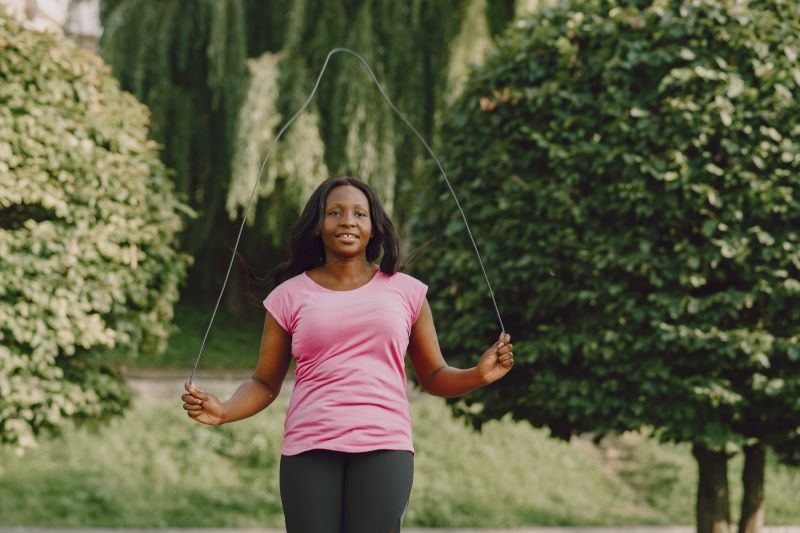
Jump rope is another simple cardio exercise that one can do anywhere. By turning up a playlist while doing this form of cardio, individuals can jump to the beats of their favourite songs. One can toss his or her jump rope in a purse, backpack, or suitcase and perform his or her 150 minutes of exercise per week anywhere, whenever he or she gets some spare time
4. Running

Running is one of the best exercises for cardiovascular endurance. It is equipment-free cardio which is great for burning a lot of sweat and also building endurance. Moreover, as compared to walking, running can burn more calories.
However, running is more strenuous and has a high impact. Thus, it has a high chance of causing injury to the legs. So, one should be careful while running and only carry out this exercise as long as one's body permits.
5. HIIT or Bootcamp
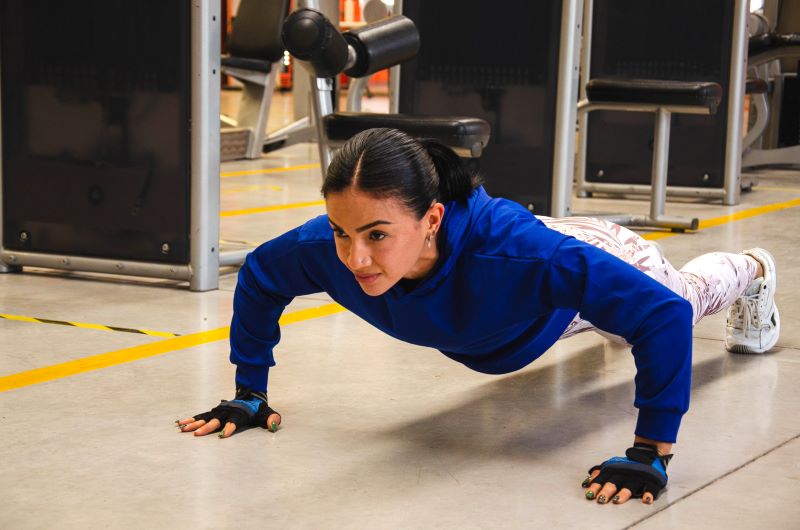
For individuals with less time but in good shape, this cardio exercise might interest you. However, it is vigorous and involves boot camp-style workouts and High-Intensity Interval Training (HIIT). These exercises include full-body workouts like jumping rope and push-ups, which boost one's heart rate.
6. Organised Sports

One need not be a sportsperson or even think of oneself as one. There are plenty of adult sports leagues filled with people who just want to have fun and be healthy. One can sign up for basketball, football, soccer, or anything that interests him/her. Running around a court or field is sure to increase one's heartbeat, thereby helping overcome low cardiovascular endurance.
7. Dance

Dancing is a great way to do some cardio, get some sweat off, and have immense fun. Dancing is not only restricted to Zumba or professional dance classes; one can simply dance around in one's own room. So, instead of waiting more, one can tune in to their favourite dance playlist and dance to their heart's content without being judged.
8. Swimming

Swimming is low-impact cardio that efficiently increases cardiovascular endurance while also being joint-friendly. However, if one is not completely confident in his or her swimming skills, one can grab a kickboard and try doing a few laps. This will help him or her exercise both his or her legs and abs.
9. Cycling

One can fit cycling into his or her day as a form of cardio in multiple ways. He or she can choose to cycle to the grocery store instead of taking a car or motorcycle. He or she can also choose to use a stationary bike in the gym for cardio instead of walking on the treadmill. One can also learn to cycle and ride it on the house's lawns or in the garage.
10. Hula-Hooping

Anyone wondering if Hula-Hooping is inappropriate for an adult and probably did it when he or she was younger is wrong. It is a fun activity and also available in adult sizes, which can help one unleash his or her inner kid. Just swinging the hips around increases the heart rate and improves core strength.
11. Stairs

Climbing up and down the stairs is a great way to start sweating and increase the heart's pumping. It is also a very convenient way to do cardio because stairs are everywhere. However, one must also remember to stay safe while climbing up and down the stairs, as one might slip and fall and even get fractures.
Strength Exercises for Low Cardiovascular Endurance
12. Jumping Jacks

Jumping jacks is another great home exercise for cardiovascular endurance since it requires no equipment. One can do this activity anywhere, anytime, and it can get one's heart rate up quickly. One can do it anytime, be it early in the morning after waking up or while waiting for lunch to get ready.
13. Burpees
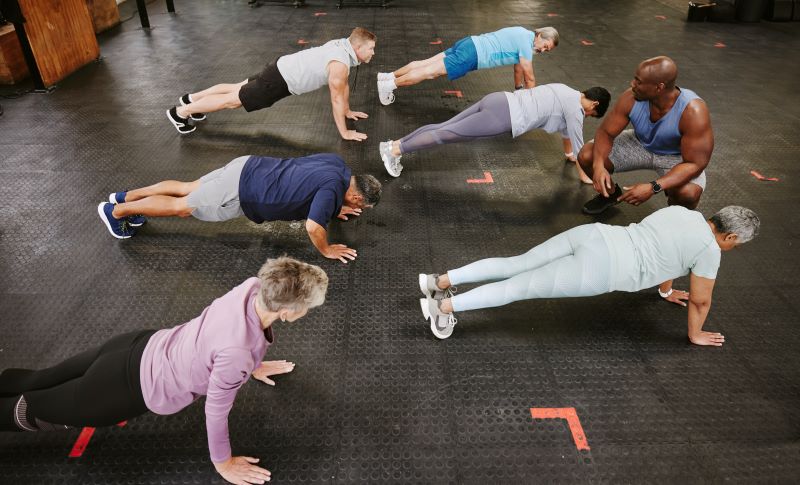
Burpees are another high-intensity full-body workout that can pump the heart faster in no time. This exercise focuses on building muscle strength and improving cardiovascular and lower and upper body endurance. It strengthens the legs, abdomen, arms, chest, hips, buttocks, and shoulders.
14. Arm Circles

Arm circles are a great, low-impact exercise to improve blood flow. Stand with your feet shoulder-width apart and extend your arms straight out to the sides. Begin making small circles with your arms, gradually increasing the size of the circles. Perform this exercise for about 30 seconds in one direction, then switch to the opposite direction. This exercise helps to increase heart rate gently.
15. Lunges
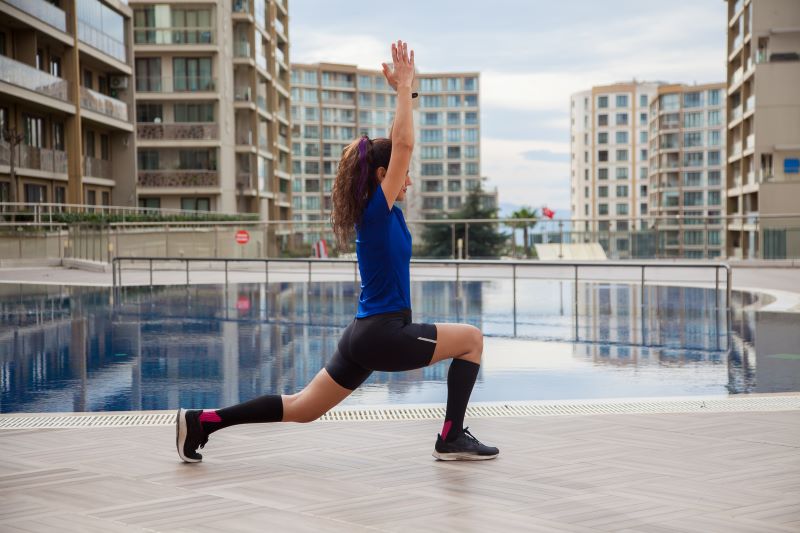
Start by standing with your feet hip-width apart. Step forward with one leg, lowering your hips until both knees are bent at about a 90-degree angle. Ensure your front knee is directly above your ankle and your back knee is just above the ground. Push back up to the starting position and repeat on the other leg. Lunges can help boost cardiovascular endurance by engaging large muscle groups.
16. Squats

Performing squats regularly can improve overall cardiovascular health and endurance. Stand with your feet shoulder-width apart. Lower your body by bending your knees and hips as if sitting back in a chair. Keep your back straight and your chest up. Once your thighs are parallel to the ground, push through your heels to return to the starting position.
17. Lateral Shuffles

Lateral shuffles enhance agility and cardiovascular fitness. Begin by standing with your feet hip-width apart and your knees slightly bent. Shuffle quickly to one side, then to the other, staying low. Keep your movements quick and controlled. This exercise raises your heart rate and improves lateral movement and coordination.
18. Mountain Climbers
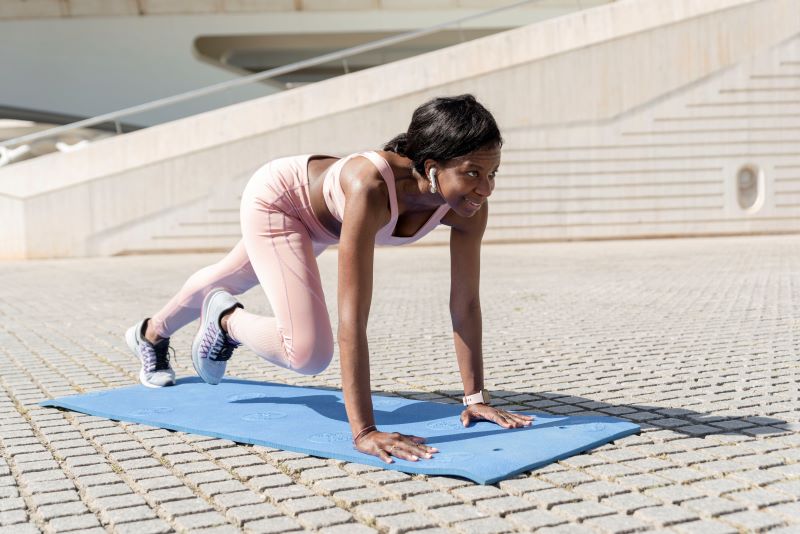
Mountain climbers are a full-body exercise that boosts cardiovascular endurance. Start in a plank position with your hands directly under your shoulders. Bring one knee towards your chest, then quickly switch legs, simulating a running motion. Keep your core engaged and your movements fast. This high-intensity exercise helps to increase heart rate and build endurance.
19. Push-Ups
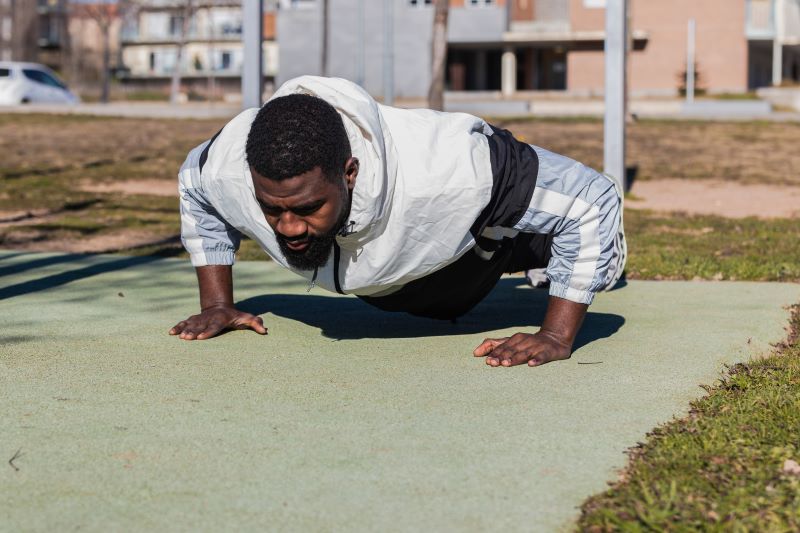
Push-ups are excellent for providing a cardiovascular challenge. Begin in a plank position with your hands slightly wider than shoulder-width apart. Lower your body until your chest nearly touches the ground, then push back up to the starting position. Keep your body in a straight line throughout the movement. Push-ups can be modified to be easier or harder, depending on your fitness level.
20. Squat Jumps

Squat jumps combine strength and cardio training. Start by performing a regular squat. As you come up, jump explosively, reaching your arms overhead. Land softly and immediately go into the next squat. This exercise increases your heart rate and helps improve power and endurance. It’s a great way to build lower body strength and boost cardiovascular fitness simultaneously.
Types of Equipment Required for Low Cardiovascular Endurance Exercise
The table mentioned below lists the equipment required for different low cardiovascular endurance exercises:
Exercise |
Required Equipment |
| Cycling | Bicycle |
| Hula-Hooping | Hula hoop |
| Jump Rope | Jump rope |
| HIIT or Bootcamp | Dumbbells or kettlebells (optional) |
| Strength Exercise | Yoga mat (Optional) |
How Does Exercising Help Relieve Low Cardiovascular Endurance?
A sedentary lifestyle, along with other risk factors like smoking, high blood pressure, and abnormal values for blood lipids, are significant contributors to low cardiovascular endurance.
Thus, if one does not take the necessary steps to reduce these factors, the chances of having a heart attack or any other cardiac event like a stroke can increase. Regular exercise, however, has shown favourable effects on established risk factors for these diseases.
For example, cardiovascular fitness exercise helps reduce blood pressure and promotes weight reduction. It can also reduce bad cholesterol levels in the blood, raise good cholesterol levels and impact the total cholesterol levels.
Patients with diabetes should regularly exercise, as it favourably affects the body's ability to control glucose levels in the blood by properly using insulin.
Although the effect of exercise is small on a single risk, moderate and continued exercise has an impactful effect on overall cardiovascular health. To improve cardiovascular endurance to the maximum, one also needs to make necessary lifestyle modifications such as reducing smoking, proper medication use, and proper nutrition.
Which Exercises to Avoid for Low Cardiovascular Endurance?
Apart from knowing the exercises to improve cardiovascular endurance, one should also know about the exercises which negatively impact it. Individuals already suffering from any existing heart condition should follow certain safety precautions. They should not start any new exercise program without a doctor's consultation.
If you have low cardiovascular endurance, avoiding exercises that could overly strain your heart and lungs is crucial. Here are some specific types of exercises you should avoid:
- Heavy Weight-Lifting: Avoid lifting heavy weights; start with lighter loads and increase gradually.
- Inverted Exercises: Avoid exercises where your head is level with or below your heart, like certain yoga poses.
- Full-Body Weight Exercises: Skip exercises like burpees; begin with isolated movements.
- Long-Distance Running on Pavement: Avoid long runs on hard surfaces; opt for shorter runs on softer surfaces.
- Holding Your Breath: Do not hold your breath during exercises; maintain steady breathing.
- Vigorous, Unfamiliar Exercises: Steer clear of high-intensity exercises you're not trained for; build endurance gradually.
What Precautions should a Low Cardiovascular Endurance Patient take while Exercising?
The precautions that one should take while exercising with low cardiovascular endurance are:
- One should wait for at least 90 minutes after eating a meal before starting or participating in aerobic exercise.
- Focusing on warm-up and cool-down is important.
- One must remember to take enough rest while doing the exercises. However, lying down after the exercises might reduce one's tolerance. Thus, it is best to rest by sitting.
- Individuals with low cardiovascular endurance should not overdo exercise. They should remember to gradually increase their exercise levels at a steady pace over time.
- One should not exercise if he or she is sick. Instead, one should wait for the illness to heal and then return to the exercise routine.
- Individuals should schedule exercise as part of their daily routine. One can try planning to exercise at the same time every day and building a habit of it.
Disclaimer: Practice the above-mentioned exercises under the supervision of a trained practitioner and consult a doctor beforehand to ensure your body is fit enough to perform the required moves/postures.
In conclusion, this is all about exercises for cardiovascular endurance. Along with a proper exercise routine, maintained lifestyle, and good food habits, one can strengthen his or her cardiovascular endurance. However, those who already have low endurance should consult a doctor before starting any routine.













